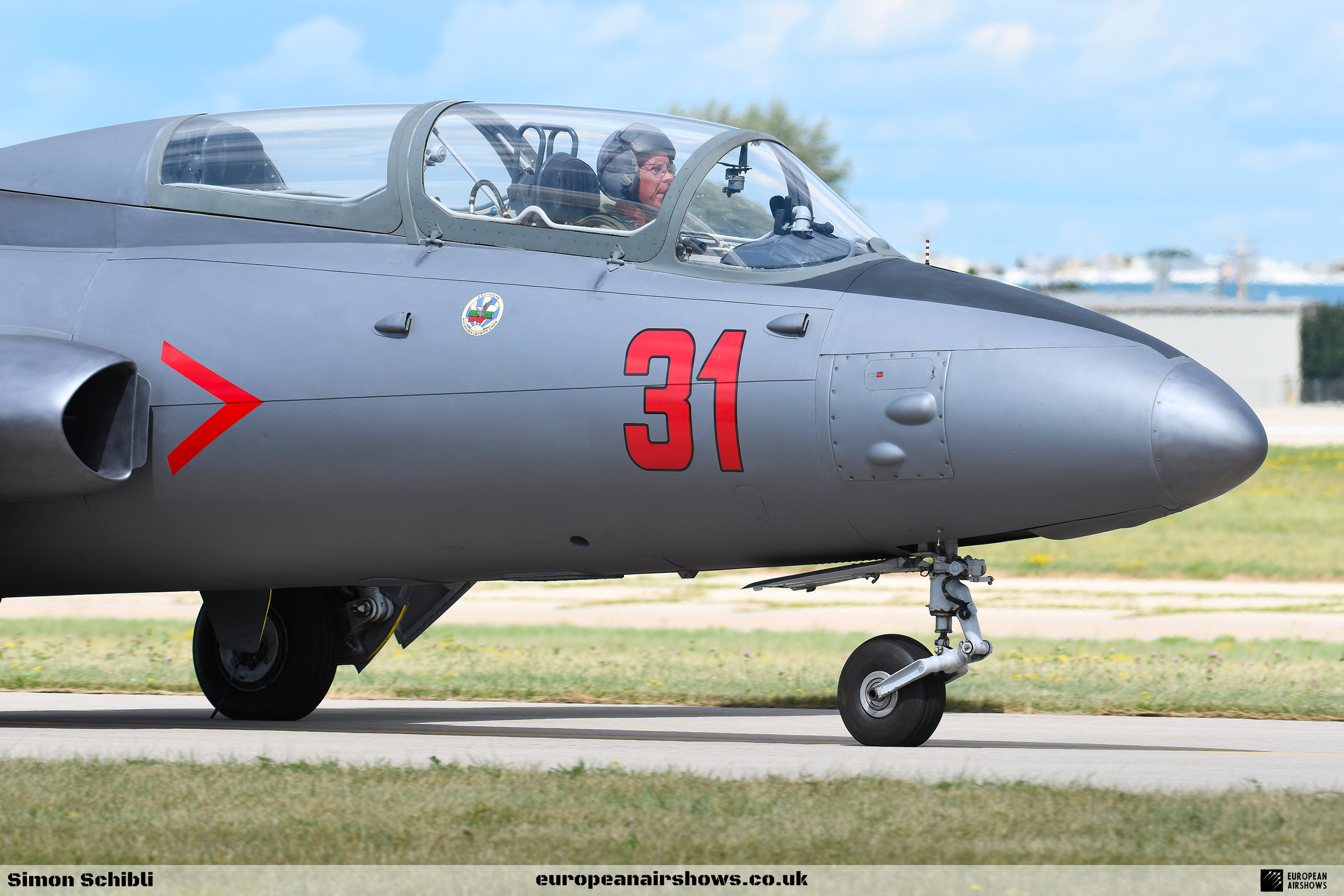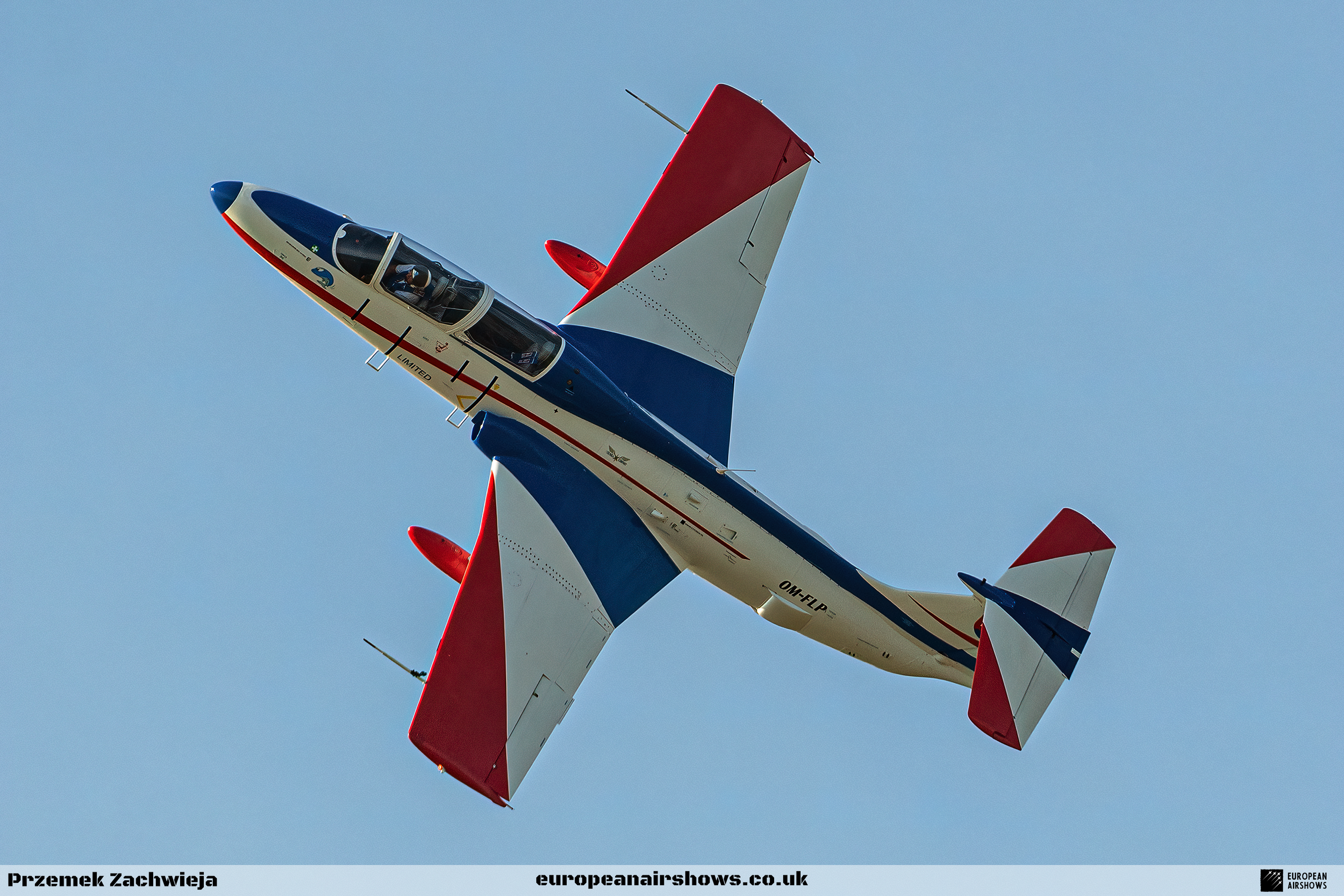
April 5 / Aero L-29 Delfin first flight
First Flight 5 April 1959
Aero L-29 Delfin
The Aero L-29 Delfín (English: Dolphin, NATO reporting name: Maya) is a military jet trainer developed and manufactured by Czechoslovakian aviation manufacturer Aero Vodochody. It is the country's first locally designed and constructed jet aircraft, as well as likely being the biggest aircraft industrial programme to take place in any of the Council for Mutual Economic Assistance (COMECON) countries except the Soviet Union.
In response to a sizable requirement for a common jet-propelled trainer to be adopted across the diverse nations of the Eastern Bloc, Aero decided to embark upon their own design project with a view to suitably satisfying this demand. On 5 April 1959, an initial prototype, designated as the XL-29, performed its maiden flight. The L-29 was selected to become the standard trainer for the air forces of Warsaw Pact nations, for which it was delivered from the 1960s onwards. During the early 1970s, the type was succeeded in the principal trainer role by another Aero-built aircraft, the L-39 Albatros, heavily contributing to a decline in demand for the earlier L-29 and the end of its production during 1974.
During the course of the programme, in excess of 3,000 L-29 Delfín trainers were produced. Of these, around 2,000 were reported to have been delivered to the Soviet Union, where it was used as the standard trainer for the Soviet Air Force. Of the others, which included both armed and unarmed models, many aircraft were delivered to the various COMECON countries while others were exported to various overseas nations, including Egypt, Syria, Indonesia, Nigeria and Uganda. Reportedly, the L-29 has been used in active combat during several instances, perhaps the most high-profile being the use of Nigerian aircraft during the Nigerian Civil War of the late 1960s and of Egyptian L-29s against Israeli tanks during the brief Yom Kippur War of 1973.
In the late 1950s, the Soviet Air Force commenced a search for a suitable jet-powered replacement for its fleet of piston-engined trainers; over time, this requirement was progressively broadened towards the goal of developing a trainer aircraft that could be adopted and in widespread use throughout the national air forces of the Eastern Bloc countries. Around the same time, the nation of Czechoslovakia had also been independently developing its own requirements for a suitable jet successor to its current propeller-powered trainer aircraft. In response to these demands, Aero decided to develop its own aircraft design; the effort was headed by a pair of aerospace engineers, Z. Rublič and K. Tomáš. Their work was centered upon the desire to produce a single design that would be suitable both performing basic and advanced levels of the training regime, carrying pilots straight through to being prepared to operate frontline combat aircraft.
The basic design concept was to produce a straightforward, easy-to-build and operate aircraft. Accordingly, both simplicity and ruggedness were stressed in the development process, leading to the adoption of manual flight controls, large flaps, and the incorporation of perforated airbrakes positioned on the fuselage sides. Aerodynamically, the L-29 was intentionally designed to possess stable and docile flight characteristics; this decision contributed to an enviable safety record for the type. The sturdy L-29 was able to operate under austere conditions, including performing take-offs from grass, sand or unprepared fields. On 5 April 1959, the prototype XL-29 conducted its maiden flight, powered by a British Bristol Siddeley Viper turbojet engine. The second prototype, which flew shortly thereafter, was instead powered by the Czech-designed M701 engine. The M-701 engine was used in all subsequent aircraft.
During 1961, a small pre-production batch of L-29s were evaluated against the Polish PZL TS-11 Iskra and the Russian Yakovlev Yak-30, the main rival submissions for the Warsaw Pact's standardised trainer. Shortly after the completion of the fly-offs, it was announced that the L-29 had been selected as the winner; according to aviation author John C. Fredrikson, this outcome had been highly unexpected and surprising to several observers. Regardless of the result, Poland chose to continue to pursue the development and procurement of the TS-11; however, all of the other Warsaw Pact countries decided to adopt the Delfín under the agreements of COMECON.
During April 1963, full-scale production of the L-29 commenced; 3,600 aircraft were manufactured over a production run of 11 years. During its production life, several derivatives of the L-29 were developed, such as a dedicated, single-seat, aerobatic version, which was designated as the L-29A Akrobat. Another model, an armed reconnaissance version complete with multiple downwards-looking cameras installed in the rear cockpit position, referred to as the L-29R, was also under development; however, during 1965, the L-29R project was terminated. Optional armaments could be installed upon some models, consisting of either a detachable gun pod or a pod containing up to four unguided missiles, which could be set upon hardpoints underneath each wing.








